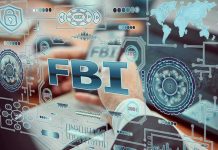
An alleged extremist network’s influence is now at the center of a Colorado school shooting, renewing urgent questions about youth exposure to radical ideas and the effectiveness of current school safety policies.
Story Snapshot
- Authorities believe the Evergreen High School shooter was radicalized by an extremist network, though the details remain under investigation.
- Swift action by law enforcement and school staff prevented further casualties during the attack.
- The incident has intensified scrutiny of youth radicalization and school safety protocols.
- Community recovery and demands for answers place pressure on both local and state officials.
School Shooting Raises Alarm Over Youth Radicalization
On September 10, 2025, Evergreen High School in Colorado became the scene of tragedy when 16-year-old student Desmond Holly opened fire, injuring two classmates before dying from a self-inflicted gunshot wound. Unlike previous school shootings, investigators quickly pointed to possible radicalization by an extremist network as a critical factor. The Jefferson County Sheriff’s Office is leading a comprehensive investigation into Holly’s communications and online activity, but the specific ideology and network involved have not yet been disclosed. Authorities, including Governor Jared Polis, have called for patience as they work to piece together Holly’s motives and any affiliations, emphasizing that community safety remains the top priority.
Law enforcement and school officials have credited Evergreen High’s rapid lockdown procedures and immediate police response with saving lives. Officers arrived within minutes of the first 911 call, and the shooter was confronted quickly, preventing further escalation. Despite the trauma, the school’s adherence to established safety protocols is being held up as a model for other districts—proof that when properly implemented, these measures can limit casualties and chaos. The effectiveness of these responses is now central to ongoing policy discussions, even as the community copes with shock and loss.
Ongoing Investigation and Unanswered Questions
The central distinguishing factor in this incident is the suspected role of an extremist network in motivating Holly’s actions. While officials have confirmed that online and offline radical influences are under scrutiny, the full scope of Holly’s connections remains unknown. This uncertainty has fueled debate about the adequacy of monitoring youth online activity and the responsibility of tech companies, parents, and schools in identifying warning signs. With the investigation ongoing, both law enforcement and policymakers are cautious not to jump to conclusions about ideology or intent. The lack of concrete details has left families and the broader public frustrated, demanding transparency and accountability as new information emerges.
Evergreen’s ordeal echoes a troubling national trend: young people increasingly targeted by extremist content online and drawn into dangerous ideologies. Colorado, still haunted by the legacies of Columbine and other attacks, now faces renewed pressure to address gaps in mental health support, digital monitoring, and early intervention. As the community mourns, state and federal leaders are being pushed to clarify how they will balance civil liberties—including First and Second Amendment protections—with the need to keep schools safe from ideologically driven violence. Legal experts and educators agree that while immediate improvements in school security are critical, the longer-term battle against radicalization will require coordination across government, law enforcement, and the private sector.
Community Impact and Policy Implications
The short-term impact on Evergreen High School is profound: classes remain canceled, trauma counseling is underway, and law enforcement maintains a visible presence. Parents and students, while grateful for the rapid response, are left grappling with fear, anger, and lingering questions about how such radicalization could take root in their own community. The broader education sector is now reviewing lockdown protocols, debating expanded mental health resources, and reconsidering the scope of digital surveillance in schools. Meanwhile, state and federal officials must navigate calls for action amid mounting political and social pressure.
Experts caution that a rush to new laws or restrictions could risk overreach and unintended consequences. There is significant concern among constitutional conservatives that any response to this tragedy must not undermine fundamental rights or open the door to government overreach. As investigations continue, the debate over youth radicalization, school safety, and policy reform promises to remain at the forefront of national discourse, with Evergreen serving as a catalyst for reflection and action on these critical issues.
Sources:
Colorado High School Shooter Believed Radicalized by Extremist Network, Authorities Say
What we know about the Evergreen High School shooting
Colorado Evergreen High School shooter identified as Desmond Holly
Colorado High School Shooting: What We Know So Far











